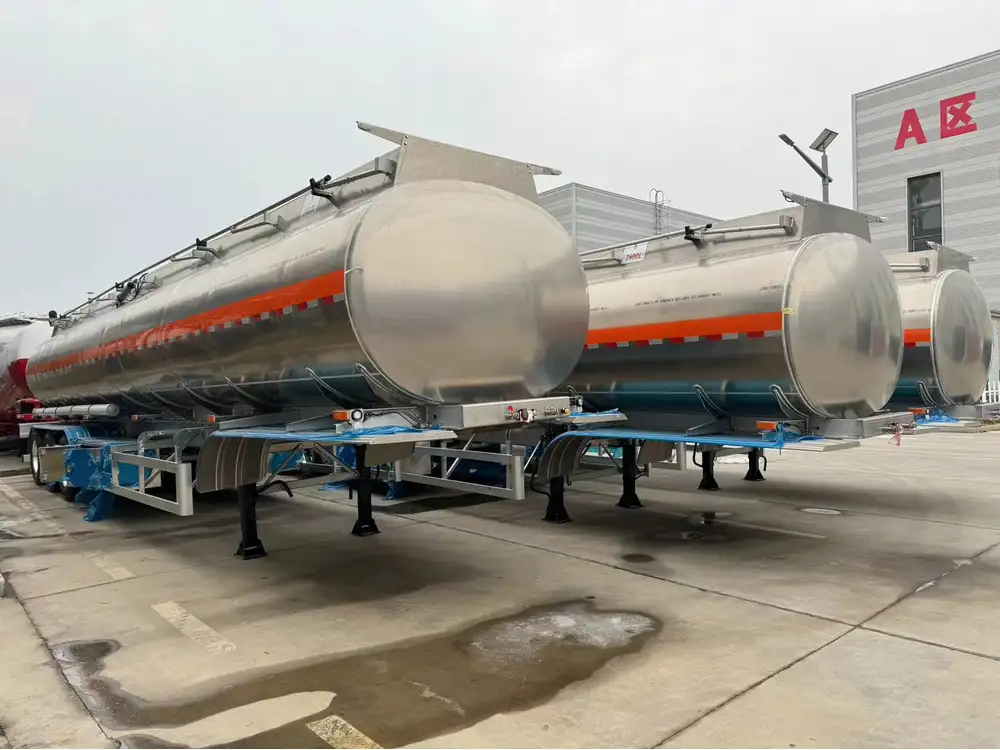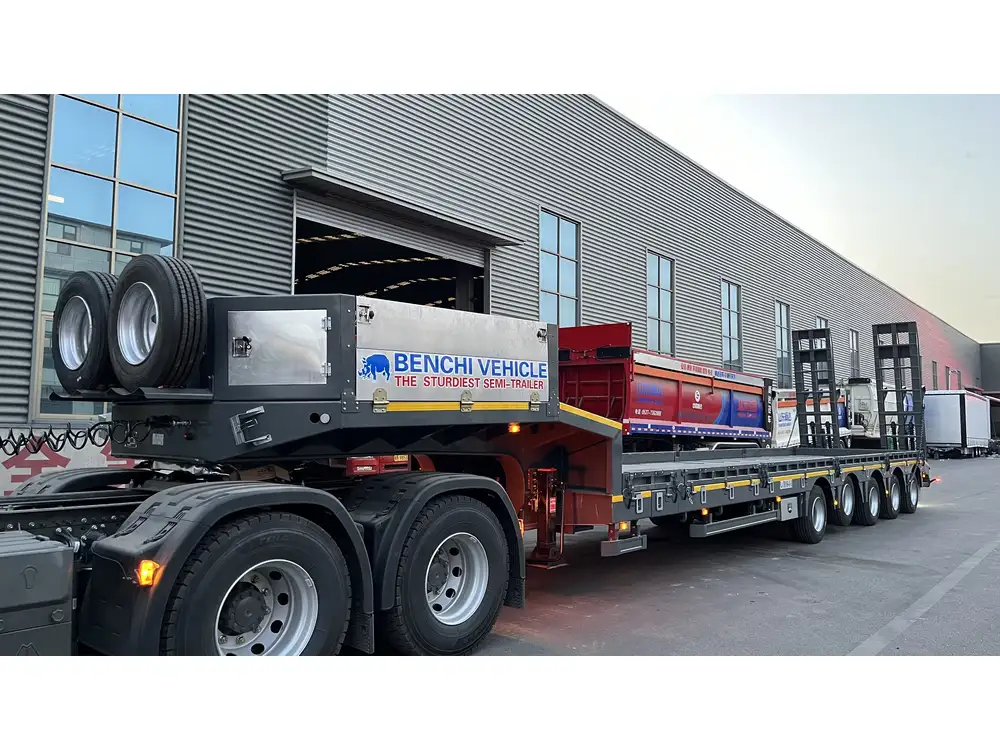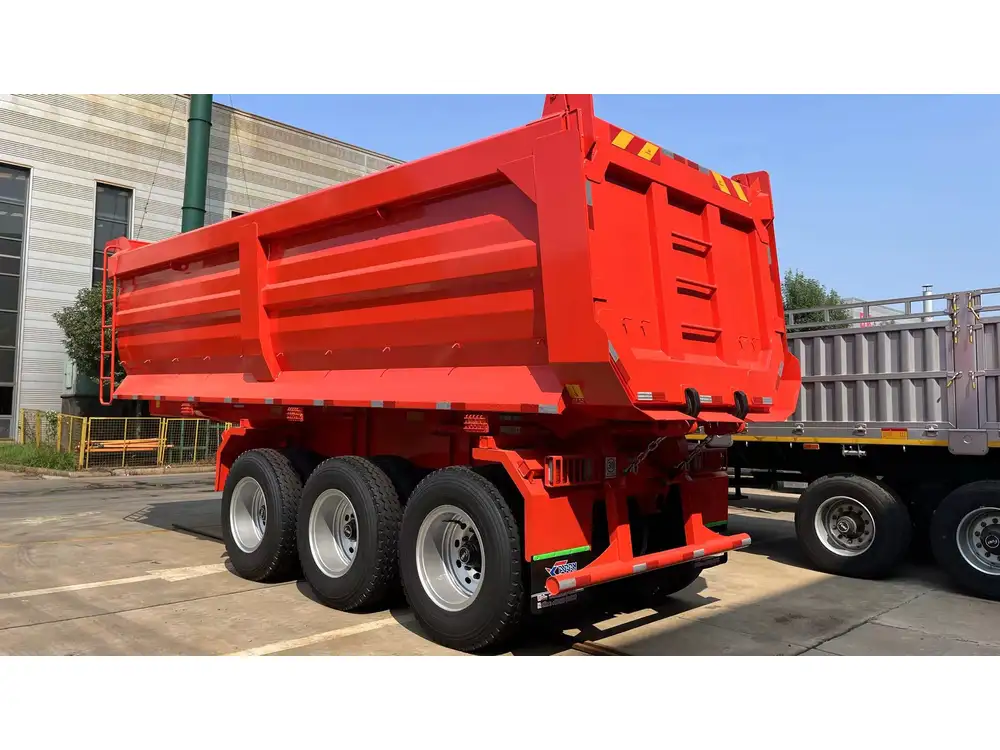Introduction to Tractor Trailer Fuel Systems
The fuel system is a critical aspect of any tractor trailer, significantly affecting its efficiency, range, and overall performance. Tractor trailers, known for their massive load-carrying capabilities, inherently face unique challenges regarding fuel storage and distribution. When addressing the question, “How many gas tanks does a tractor trailer use?” it’s crucial to embark on an exploration of various configurations that define these vehicles.
Importance of Fuel Tank Configuration
Fuel tank configuration directly influences multiple facets, including:
- Range: The distance a tractor trailer can travel before needing to refuel.
- Payload Efficiency: The balance between fuel weight and cargo weight.
- Operational Flexibility: Adaptability to different types of loads and routes.
In this article, we will dissect the different capacities and configurations of gas tanks found in tractor trailers, investigating why these configurations matter and how prospective buyers can assess their needs effectively.

Typical Tractor Trailer Gas Tank Configurations
Standard Tank Configurations
Most tractor trailers typically feature one to three fuel tanks; however, configurations can vary based on manufacturer design, model, and intended use. The two most common configurations include:
| Configuration Type | Number of Tanks | Tank Capacity per Tank | Total Capacity |
|---|---|---|---|
| Single Tank | 1 | 100-150 gallons | 100-150 gallons |
| Dual Tank | 2 | 50-100 gallons | 100-200 gallons |
| Multi-Tank | 3 or more | 50-75 gallons | 150-250 gallons |
Exploring these configurations reveals how each plays an essential role in maximizing efficiency and range.
Dual Tank Configurations
Many long-haul tractor trailers are designed with dual tank configurations. This setup, involving two tanks, usually positioned on either side of the frame, enhances the fuel capacity without significantly impinging on trailer aerodynamics or maneuverability.
- Advantages of Dual Tanks:
- Extended Range: Enables drivers to cover greater distances without frequent stops for fuel.
- Distributive Weight: Balances weight across the vehicle, positively impacting handling.
- Refueling Flexibility: Offers the option to draw fuel from either tank, optimizing the use of available fuel.

Triple Tank or Quad Tank Configurations
In specialized applications, especially in heavy-duty and long-haul segments, tractor trailers may employ three or even four tanks.
- Why Triple or Quadruple?
- Maximum Range: Essential for operating in remote regions where refueling options are limited.
- Increased Fuel Resilience: Reduces the risk of running out of fuel.
- Segmentation: Allows for different diesel blends or fuel types to be used for specific journeys, potentially improving fuel economy or performance.
Factors Influencing Tank Configuration
Several considerations drive the choice of tank configuration:
1. Operational Needs
- Long-haul vs. short-haul requirements determine the necessity for larger fuel capacities.

2. Regulations and Compliance
- Local laws regarding fuel storage and emissions can dictate tank specifications.
3. Vehicle Type
- Different tractor trailer types may necessitate unique designs—flatbeds, dry vans, and reefer trailers come to mind, each with varying fuel efficiency needs.
Fuel Tank Capacities Across Different Truck Models
Tractor trailers aren’t a monolith; they come in a wide variety of models, each engineered for specific duties. This section outlines some examples from leading manufacturers:

Peterbilt
- Model 579: Typically offers dual tank options, with capacities ranging from 100 gallons to 150 gallons per tank.
- Advantages: Known for their aerodynamic shape, relieving fuel consumption.
Freightliner
- Cascadia Model: Can have dual tanks, each with capacities of around 75 to 150 gallons, allowing for total capacity up to 300 gallons with an optimal weight distribution.
- Advantages: Engineered for fuel efficiency and designed to reduce aerodynamic drag.
Kenworth
- T680: Allows for versatile configurations with two or three tanks, each holding between 100 to 125 gallons.
- Plug-and-Play Nature: The design accommodates various load types, making it an industry favorite.

Volvo
- VNL Series: Typically offers dual or triple tank configurations, with each tank capable of holding up to 100 gallons, providing ample range for long hauls.
- Smooth Ride: Focuses on driver comfort and fuel economy.
Calculating Your Fuel Needs
Fuel Efficiency Analysis
To determine how many gas tanks a tractor trailer should be equipped with, several factors must be considered, including fuel efficiency metrics, average distance covered, and load capacity.

Fuel Consumption Rates
For example, consider a tractor trailer that consumes an average of 6 miles per gallon. If a driver plans to travel 600 miles on a single journey:
- Fuel Needed: ( \frac{600 \text{ miles}}{6 \text{ mpg}} = 100 \text{ gallons} )
- If utilizing one tank with 100 gallons, it would be just enough for one journey. However, if dual tanks are employed, the extra fuel capacity can allow for more extended journeys without refueling.
Future-Proofing Fuel Capacity
Investing in additional tank capacity today may save headaches down the line. With fluctuating fuel prices and potential supply chain issues, having a tractor trailer that can carry more fuel provides a buffer against sudden constraints.
The Economic Implications of Tank Selection
Fuel costs are a significant factor affecting the profitability of running a trucking business. With fuel prices continually changing, operators must assess the relationship between capacity, efficiency, and cost over time.

Analysis of Tank Alternatives
- Higher Initial Cost: More tanks increase upfront expenses but can reduce overall costs in long haul scenarios.
- Operational Downtime: A larger fuel capacity might mean fewer trips to the pump, directly translating into more operational hours and higher earnings.
Comparative Cost Analysis of Tank Configurations
| Type | Initial Cost | Potential Savings on Fuel | Operational Impact |
|---|---|---|---|
| Single Tank | Low | Low – moderate | Frequent refueling required |
| Dual Tank | Moderate | Moderate – high | Balanced weight, extended range |
| Triple/Quad Tank | High | High savings over long hauls | Minimal downtime, comprehensive operational flexibility |
Addressing Common Questions

Q1: What Should I Consider When Choosing a Tank Configuration?
When selecting a configuration, consider:
- Distance of Typical Loads: Routine routes heavily influence your tank preference.
- Vehicle Compatibility: Ensure selected tanks enhance rather than inhibit your tractor trailer’s performance.
Q2: How Do Fuel Regulations Impact Tank Size and Configuration?
Regulations differ by region, and truck operators must stay compliant. Larger tanks may be subject to greater scrutiny, requiring additional metrics for reporting and emissions testing.
Q3: How Often Should Tanks Be Inspected?
Regular inspections and maintenance are crucial to ensure the safety and efficiency of your fuel system. Check with local regulations and manufacturer guidelines but aim for at least bi-annual inspections.

Conclusion: The Role of Gas Tank Configurations in Efficiency and Performance
In summary, the question of “how many gas tanks on a tractor trailer?” is intricate, hinging on an array of factors such as operational needs, vehicle types, market dynamics, and evolving regulations. Understanding these elements integrates into more effective planning for logistics and long-term operational strategies. Consequently, a well-informed approach to selecting the appropriate tank configuration not only enhances a tractor trailer’s range and efficiency but also optimizes overall operational capacities, leading to better profitability and sustainability in the transportation industry.



